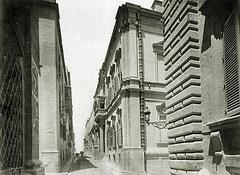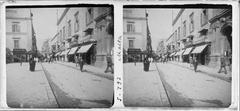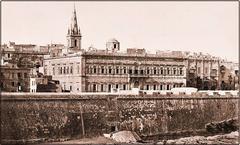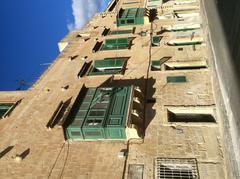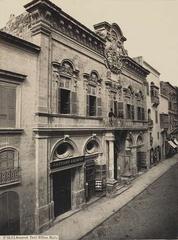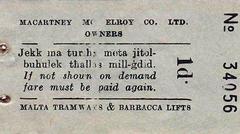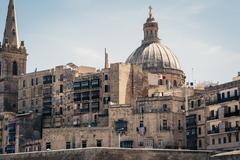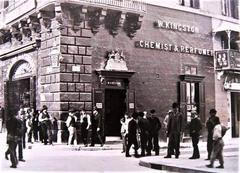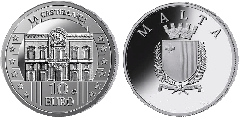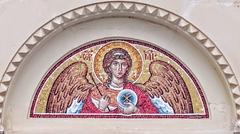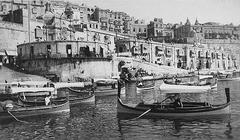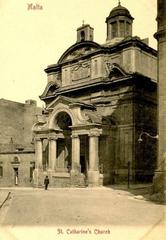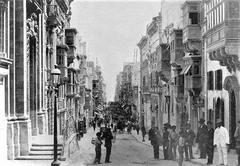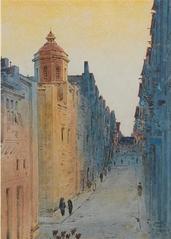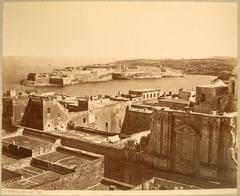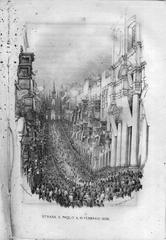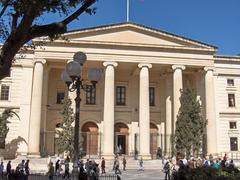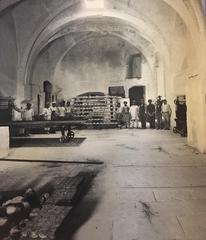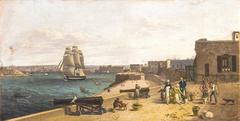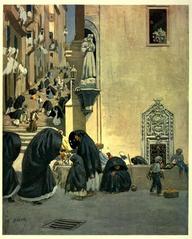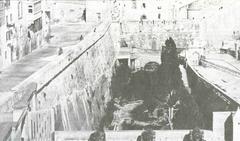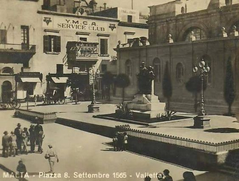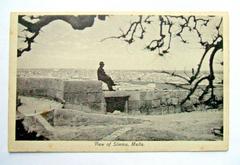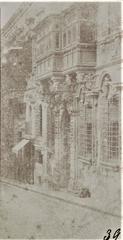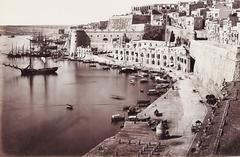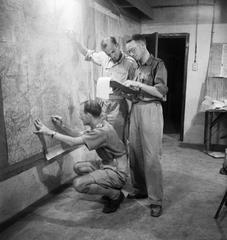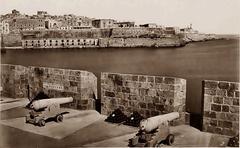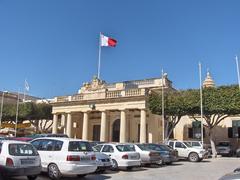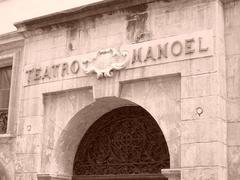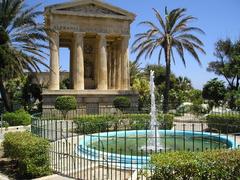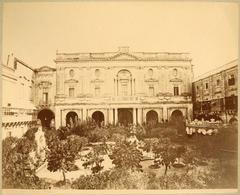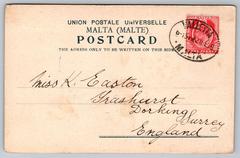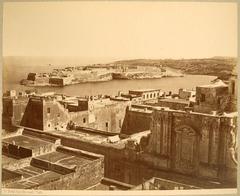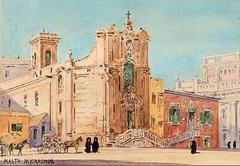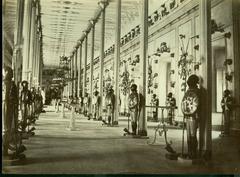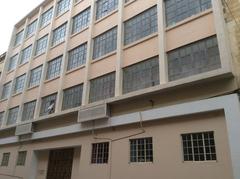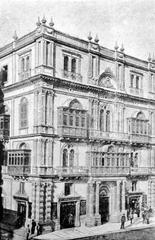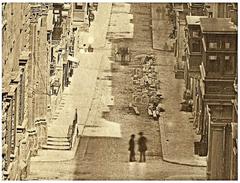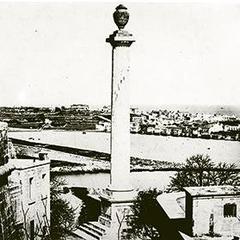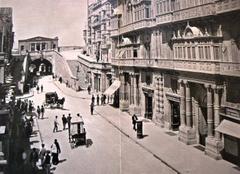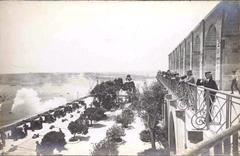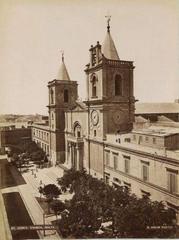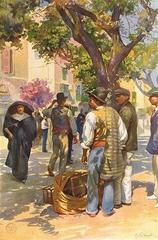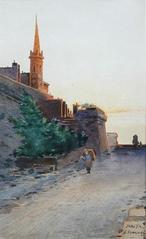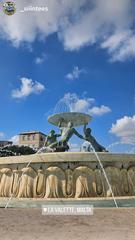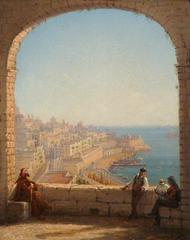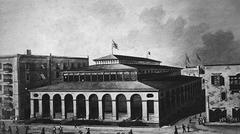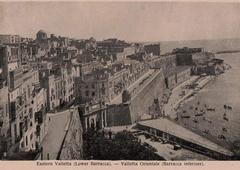Parliament House Valletta Malta: Visiting Hours, Tickets, and Tourist Guide
Date: 14/06/2025
Introduction: History and Significance
Malta’s Parliament House in Valletta stands at the crossroads of history, culture, and contemporary architectural innovation. It is a compelling destination for those interested in Malta’s democratic journey and urban transformation. While Malta’s parliamentary roots stretch back to 1835 under British colonial rule, the evolution of its legislature is encapsulated in the transition from the historic Grandmaster’s Palace to the modern Parliament House—an emblem of Malta’s present-day sovereignty and civic ambition.
The new Parliament House, completed in 2015, was conceived as part of the Valletta City Gate Project and designed by the world-renowned Italian architect Renzo Piano. This project aimed to revitalize Valletta’s city entrance, creating a landmark that respectfully bridges the city’s Baroque heritage with cutting-edge architectural expression. The building’s sculpted Maltese limestone façade, sustainable technologies—including geothermal energy and photovoltaic panels—and its elevated stone blocks make it both a functional center of government and a national symbol (archdaily.com, Fondazione Renzo Piano).
Though public access to the Parliament’s interior is limited due to its governmental functions, the exterior is freely accessible and regularly photographed by both locals and tourists. Its prime location at Valletta’s City Gate places it amidst significant historical sites, making it an ideal starting point for exploring the city (Obon Paris, Miss Tourist). While its contemporary design sparked debate, the Parliament House has played a major role in rejuvenating Valletta’s entrance, enhancing accessibility, and providing Malta’s legislature with a sustainable, iconic home.
Table of Contents
- Malta’s Parliament House: History, Architecture, and Visitor Information
- Parliament House Valletta: Visiting Hours, Tickets, and Architectural Highlights
- Controversy, Urban Impact, and Practical Visitor Information
- Visitor Experience: Access, Transportation, and Tips
- Summary Table: Key Visitor Information
- Summary and Recommendations
- References and Sources
Malta’s Parliament House: History, Architecture, and Visitor Information
Early Parliamentary Traditions
Malta’s parliamentary traditions began in 1835 with the establishment of the Council of Government during British colonial rule. Over time, reforms expanded local representation, culminating in independence in 1964 and the creation of a modern parliament. For decades, sessions were held in the Grandmaster’s Palace, a Baroque building constructed by the Knights of St. John (thetouristchecklist.com). As the needs of governance grew, the palace’s limitations became increasingly pronounced.
Need for a New Building
By the early 21st century, the Grandmaster’s Palace could no longer support the requirements of a modern legislative body. Its historic structure made upgrades for technology, accessibility, and security difficult, and its dual function as both museum and parliament created logistical complications. The need for a new, purpose-built Parliament House became clear, prompting its inclusion in the ambitious Valletta City Gate Project (archdaily.com).
The City Gate Project and Renzo Piano
The City Gate Project, initiated in the late 2000s, encompassed the redesign of Valletta’s entrance, construction of the Parliament House, transformation of the Royal Opera House ruins into an open-air theatre, and landscaping of surrounding areas. Renzo Piano’s vision sought to create a dialogue between Valletta’s Baroque heritage and modern architecture. Completed at a cost of around €90 million, the Parliament House respects the city’s UNESCO status while introducing innovative forms and green technologies (maptrotting.com).
Architectural Features and Sustainability
The building comprises two massive stone blocks elevated on slender columns, creating a sense of openness at the city’s threshold (archdaily.com). The northern block houses the parliamentary chamber; the southern block contains offices for MPs, the Prime Minister, and the Leader of the Opposition. The façade, crafted from Gozo limestone and carved with CNC technology, acts as a brise-soleil, filtering light and heat while allowing natural daylight (belvederearchitecture.com).
Environmental sustainability was central to the design:
- Natural ventilation leverages cool sea breezes (belvederearchitecture.com).
- Geothermal energy is provided by 40 boreholes for heating and cooling, reducing energy consumption by up to 40% (archdaily.com).
- Photovoltaic panels on the roof generate over half the building’s annual electricity.
- Shading facades minimize solar heat gain.
Visiting Information
- Exterior Access: Parliament House can be admired and photographed at any time; it sits in a public square near City Gate (Obon Paris).
- Interior Access: As of June 2025, there is no regular public access for interior tours. Occasionally, guided tours or special events grant limited access; advance booking is required (Obon Paris).
- Tickets: No tickets are needed to view the exterior. For rare guided tours, check the official Parliament website.
- Accessibility: The exterior and surrounding square are wheelchair accessible; the building itself is designed for universal access (Miss Tourist).
Nearby Historical Sites
Key sites within a short walk include:
- Royal Opera House ruins (Pjazza Teatru Rjal)
- Saint James Cavalier cultural center
- Grandmaster’s Palace
- Upper Barrakka Gardens (panoramic harbor views)
- St. John’s Co-Cathedral (Miss Tourist)
Controversy and Reception
The Parliament House’s modern design, cost, and scale were initially controversial, with critics claiming it clashed with Valletta’s historic context (maptrotting.com). However, the project has been credited with revitalizing Valletta’s entrance, improving pedestrian flow, and enhancing civic pride (belvederearchitecture.com).
Parliament House in Malta’s Democracy
The building’s opening in 2015 marked a milestone in Malta’s democratic evolution, symbolizing the nation’s commitment to transparent governance and cultural renewal. It stands not only as the legislative seat but also as a focal point for civic activities and cultural events.
Key Milestones
- 1835: Establishment of the Council of Government
- 1964: Malta gains independence
- 2011: Construction of the new Parliament House begins
- 2015: Official inauguration of Parliament House (maptrotting.com)
Parliament House Valletta: Visiting Hours, Tickets, and Architectural Highlights
Historical and Urban Setting
Parliament House is located at Valletta’s City Gate, on the symbolic threshold of the city (Fondazione Renzo Piano). The area was revitalized as part of a broader regeneration project, integrating the new building into Valletta’s urban and historical fabric.
Architectural Design and Innovation
Renzo Piano’s design elevates two limestone blocks on slender columns, creating an open ground-level public piazza. The CNC-carved limestone façade filters sunlight and reduces energy needs, while the use of local materials and sustainable systems anchors the building in its Maltese context (Arquitectura Viva, Fondazione Renzo Piano).
Visitor Information
- Exterior Access: Open 24/7; freely accessible for photographs and viewing.
- Interior Tours: Not regularly available; check for special events or open days.
- Transportation: Located adjacent to Valletta’s main bus terminal and parking areas. The city is easily walkable (Miss Tourist).
- Best Photography Times: Early morning or late afternoon for optimal lighting (The Historian Traveller).
Controversy, Urban Impact, and Practical Visitor Information
The project’s budget, design, and urban impact sparked significant debate. Critics argued it disrupted the city’s Baroque skyline and exceeded reasonable costs, while supporters praised its environmental innovation and contribution to civic life. The Parliament House now stands as a prominent symbol of Malta’s ongoing dialogue between tradition and modernity (Arquitectura Viva).
- Accessibility: The building and square are wheelchair accessible.
- Nearby Transport: Bus and ferry terminals are nearby.
- Facilities: No public facilities inside; cafés, restrooms, and shaded seating are available in adjacent areas (Grumpy Camel).
- Safety: The area is highly secure and well-lit.
Visitor Experience: Access, Transportation, and Tips
- Public Access: Exterior and surrounding square accessible 24/7; no tickets required.
- Facilities: Public restrooms and cafés nearby.
- Accessibility: Level, pedestrianized area suitable for wheelchairs and strollers (Miss Tourist).
- Nearby Attractions: Royal Opera House, Saint James Cavalier, Upper Barrakka Gardens, Grandmaster’s Palace, St. John’s Co-Cathedral (Obon Paris).
- Events: The Royal Opera House hosts cultural events; Freedom Square is used for public gatherings.
- Transportation: Best reached on foot from City Gate; parking is limited.
- Weather: Bring sun protection and water in summer.
- Etiquette: Maintain respectful behavior; do not attempt to photograph restricted areas or security personnel.
Summary Table: Key Visitor Information
| Feature | Details |
|---|---|
| Location | Republic Street, near City Gate, Valletta |
| Public Access | Exterior only, 24/7 |
| Admission | Free |
| Facilities | None inside; public restrooms and cafés nearby |
| Accessibility | Wheelchair accessible, pedestrianized area |
| Photography | Permitted outside |
| Nearby Attractions | Royal Opera House, St. James Cavalier, Upper Barrakka Gardens, Grandmaster’s Palace |
| Transport | Bus terminal at City Gate; walking recommended |
| Safety | High security, well-lit, safe area |
Summary and Recommendations
Malta’s Parliament House in Valletta is a remarkable blend of democratic heritage, sustainable architecture, and urban regeneration. While interior access is restricted, its striking exterior and central location make it a must-see on any Valletta itinerary. The building’s innovative design and green technologies are best appreciated in person, especially during early or late daylight hours. Combine your visit with nearby historical sites for a deeper appreciation of Malta’s rich heritage.
For up-to-date information on tours, events, and accessibility, consult the official Parliament of Malta website or Visit Malta. Enhance your visit with guided tour apps like Audiala, and follow local tourism resources for the latest updates.
References and Sources
- Discover Malta’s Parliament House: History, Architecture, and Visitor Information, 2025, The Tourist Checklist (thetouristchecklist.com)
- Valletta City Gate Project by Renzo Piano, 2015, ArchDaily (archdaily.com)
- Valletta City Gate Project, Fondazione Renzo Piano (Fondazione Renzo Piano)
- Parliament House Valletta Visiting Hours and Tickets, Obon Paris, 2025 (Obon Paris)
- Parliament House Valletta Access and Nearby Attractions, Miss Tourist, 2025 (Miss Tourist)
- Parliament House Valletta Architectural Analysis, Arquitectura Viva (Arquitectura Viva)
- Official Parliament of Malta Website, 2025 (parlament.mt)
- Valletta Tourism Guide, Travel2Malta (travel2malta.com)
- UNESCO Valletta World Heritage Site (whc.unesco.org)
- Audiala Guided Tours App (audiala.com)
